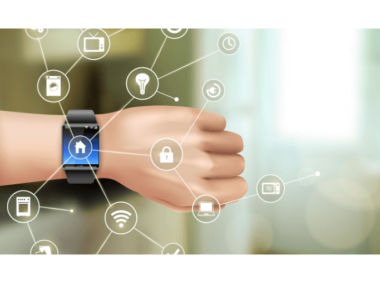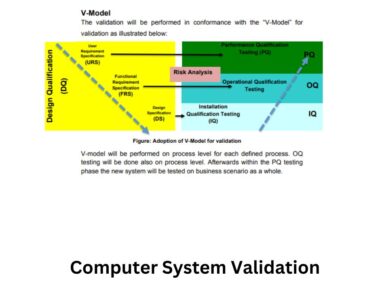5G Technology? 5G is the fifth generation of wireless technology that promises faster speeds, lower latency, and greater capacity than its predecessors.
Also Read
It is the next step in the evolution of mobile networks, and it is expected to revolutionize the way we live, work, and communicate. But how does 5G technology work?

At its core, 5G is a wireless technology that uses radio waves to transmit data between devices. However, unlike previous generations of wireless technology, 5G is designed to be more flexible, more efficient, and more capable of handling the demands of an increasingly connected world.
It achieves this by leveraging a combination of new radio frequencies, advanced antenna technologies, and sophisticated software algorithms.
One of the key features of 5G technology is its ability to operate on a wider range of frequencies than previous generations of wireless technology. This includes both lower frequencies, which are better suited for providing coverage over large areas, and higher frequencies, which can provide faster speeds and greater capacity in densely populated areas.
By using a combination of these frequencies, 5G is able to provide a more seamless and consistent user experience, regardless of location or device.
Table of Contents
Understanding 5G Technology
5G technology is the fifth-generation wireless network technology that is designed to enhance wireless communication and connectivity by providing faster data transmission, lower latency, and more connected devices than the existing 4G LTE technology.
The key difference between 5G and 4G technology is the frequency bands used for data transmission. While 4G technology uses low-band and mid-band frequencies, 5G technology uses high-band frequencies to transmit data.
High-band frequencies provide faster data transmission and lower latency but have a shorter range than low-band and mid-band frequencies.
To support 5G technology, mobile networks are upgraded with new infrastructure such as radio access network (RAN) and core network. The RAN is responsible for transmitting data between devices and the core network, while the core network is responsible for managing user data and providing services such as voice and video calls.
The use of high-band frequencies in 5G technology requires the deployment of more small cells and antennas to provide coverage. The deployment of more small cells and antennas enables more devices to connect to the network and receive faster data transmission.
In addition to high-band frequencies, 5G technology also uses low-band and mid-band frequencies to provide coverage in areas where high-band frequencies cannot reach. The use of low-band and mid-band frequencies provides wider coverage but at a lower speed than high-band frequencies.
Overall, 5G technology is designed to provide faster data transmission, lower latency, and more connected devices than the existing 4G LTE technology.
It uses high-band frequencies for faster data transmission and low-band and mid-band frequencies for wider coverage. With the deployment of more small cells and antennas, 5G technology will enable more devices to connect to the network and receive faster data transmission.
The Evolution of Cellular Networks

The evolution of cellular networks has been a fascinating journey. From the first-generation (1G) analog cellular networks to the fifth-generation (5G) networks, cellular technology has come a long way. Each generation has brought significant improvements in speed, capacity, and reliability.
The first-generation (1G) cellular networks were introduced in the 1980s. These networks used analog technology and were primarily designed for voice communication. They were characterized by poor voice quality, limited coverage, and low capacity. However, they laid the foundation for the future development of cellular networks.
The second-generation (2G) cellular networks were introduced in the early 1990s. These networks used digital technology and provided significant improvements in voice quality, coverage, and capacity. They also introduced new features such as SMS messaging and caller ID.
The Third-generation (3G) cellular networks were introduced in the early 2000s. These networks provided significant improvements in data speeds and introduced new features such as video calling and mobile internet access.
The fourth-generation (4G) cellular networks were introduced in the late 2000s. These networks provided even faster data speeds, lower latency, and improved reliability. They also introduced new features such as mobile payments and mobile TV.
The 4G LTE (Long-Term Evolution) networks are the most widely used cellular networks today. These networks provide even faster data speeds, lower latency, and improved reliability. They also support a wide range of services such as video streaming, online gaming, and cloud computing.
Cellular providers around the world are now rolling out the fifth-generation (5G) networks. These networks are designed to provide even faster data speeds, lower latency, and improved reliability. They also support new services such as virtual and augmented reality, autonomous vehicles, and smart cities.
In summary, the evolution of cellular networks has been a continuous process of innovation and improvement. Each generation has brought significant improvements in speed, capacity, and reliability.
The fifth-generation (5G) networks are the latest and most advanced cellular networks, and they are set to revolutionize the way we communicate and interact with the world around us.
5G Speed and Latency

5G technology promises to provide faster data rates than its predecessors, with peak data rates of up to 20 Gbps. This is a significant increase from 4G’s peak data rate of 1 Gbps.
However, it’s important to note that the actual speeds experienced by users will depend on a variety of factors, including network coverage, device capabilities, and network congestion.
One of the key benefits of 5G technology is its lower latency. Latency refers to the delay between when a user sends a request and when they receive a response.
With 5G, latency is expected to be significantly lower than with previous generations of wireless technology. This is particularly important for applications that require real-time responsiveness, such as online gaming and autonomous vehicles.
According to Verizon, 5G latency is generally faster than the blink of an eye, enabling users to send and download large amounts of data in near real-time.
Ericsson reports that latency is lower on 5G compared to 4G, with the lowest latency occurring when 5G is operated on millimeter wave. The vast majority of speed tests have measured a latency of less than 50 ms.
It’s worth noting that while 5G technology promises to provide faster speeds and lower latency, the actual speeds and latency experienced by users will depend on a variety of factors.
These factors include network coverage, device capabilities, and network congestion. As 5G technology continues to be deployed and refined, it’s likely that we’ll see even faster speeds and lower latency in the future.
5G Coverage and Bandwidth
5G technology promises to revolutionize the way we use the internet and mobile devices. One of the key advantages of 5G is its ability to offer faster speeds and better coverage than previous generations of wireless technology.
The coverage of 5G networks is expected to be much wider than that of 4G, with the potential to reach more rural areas. However, it is important to note that 5G coverage will depend on the frequency band used.
The higher frequency bands, such as millimeter waves (mmWave), offer faster speeds but have a shorter range and are more easily blocked by obstacles such as buildings and trees. Lower frequency bands, on the other hand, have a longer range but lower speeds.
To ensure widespread 5G coverage, network providers will need to deploy a mix of frequency bands. The use of multiple frequency bands will also allow for better load balancing, ensuring that users in crowded areas such as cities can still experience fast speeds.
In terms of bandwidth, 5G is expected to offer significantly greater capacity than 4G. This is due to the use of wider frequency bands and advanced technologies such as beamforming and MIMO (multiple-input multiple-output). These technologies allow for more efficient use of the available spectrum, resulting in faster speeds and more reliable connections.
Overall, the combination of wider coverage and greater bandwidth is expected to make 5G a game-changer for internet and mobile connectivity. As network providers continue to roll out 5G networks, users can expect to experience faster speeds and more reliable connections, whether they are in urban or rural areas.
The Role of AI in 5G Technology
Artificial Intelligence (AI) is set to play a significant role in the implementation and deployment of 5G technology. With the increased speed and capacity of 5G networks, AI will be crucial in managing the sheer volume of data generated by the Internet of Things (IoT) devices.
One of the key areas where AI will be utilized is in automation. With the help of AI, 5G networks will be able to automate processes and enable machine-to-machine communication, allowing for more efficient and streamlined operations. This will be especially important in the context of Industry 4.0 and smart factories, where automation is already a key component.
Another area where AI will be critical is edge computing. With the low latency and high bandwidth of 5G networks, edge computing will become more important than ever. AI will enable the processing of data at the edge, reducing latency and improving the overall performance of the network.
AI will also play a crucial role in network optimization. With the help of machine learning algorithms, 5G networks will be able to optimize their performance and adapt to changing network conditions in real-time. This will be important in ensuring that the network is always operating at peak efficiency, even as the number of connected devices continues to grow.
Overall, the role of AI in 5G technology is set to be significant. From automation to edge computing to network optimization, AI will be crucial in enabling the full potential of 5G networks.
5G and the Internet of Things
5G technology is expected to revolutionize the Internet of Things (IoT) by providing faster, more reliable, and secure connectivity. With its ability to handle massive amounts of data and low latency, 5G is set to enable a wide range of IoT applications.
One of the key advantages of 5G for IoT is network slicing, which allows the creation of virtual networks tailored for specific IoT use cases. This means that different IoT devices can be connected to different virtual networks, each with its own performance characteristics, security features, and quality of service.
For example, a smart city could use 5G network slicing to create separate virtual networks for traffic management, public safety, and environmental monitoring.
Each virtual network could be optimized for the specific needs of the IoT devices connected to it, ensuring that they receive the necessary bandwidth, latency, and security.
Another advantage of 5G for IoT is the ability to support a massive number of devices per unit area. This is achieved through the use of advanced antenna technologies such as massive MIMO, beamforming, and beam tracking.
These technologies allow 5G networks to focus their signals on specific areas and devices, increasing the network capacity and reducing interference.
Moreover, 5G technology offers enhanced security features like authentication and encryption, making it harder for hackers to exploit the IoT networks. This is particularly important for critical IoT applications such as healthcare, transportation, and industrial automation.
In conclusion, 5G technology is expected to play a crucial role in the development of the Internet of Things by providing faster, more reliable, and secure connectivity.
With its ability to support network slicing, massive device connectivity, and advanced security features, 5G is set to enable a wide range of IoT applications in various industries.
5G and Mobile Devices
5G technology is poised to revolutionize the way mobile devices communicate with each other and the internet. With faster speeds, lower latency, and greater capacity.
5G networks will enable new applications and services that were previously impossible. In this section, we will explore how 5G technology works with mobile devices such as smartphones and tablets.
Mobile phones have come a long way since their inception, and 5G technology is the next step in their evolution. 5G networks will offer faster download and upload speeds, making it easier to stream high-quality video, play online games, and download large files.
This will be a game-changer for mobile users, as they will be able to do more with their devices than ever before.
One of the key players in the 5G space is Samsung, which has been at the forefront of 5G innovation. Samsung has already launched several 5G-enabled devices, including the Galaxy S20, Galaxy Note20, and Galaxy Z Fold2.
These devices are powered by Qualcomm’s Snapdragon 865 5G Mobile Platform, which provides the processing power necessary to support 5G connectivity.
Nokia is another company that is heavily invested in 5G technology. Nokia has been working closely with operators to deploy 5G networks around the world. Nokia’s AirScale Radio Access solution is a key component of 5G networks, providing the necessary infrastructure to support 5G connectivity.
Operators are also playing a crucial role in the deployment of 5G networks. Companies such as Verizon, AT&T, and T-Mobile are investing heavily in 5G infrastructure to provide their customers with faster and more reliable connectivity.
These operators are also working with device manufacturers to ensure that their devices are compatible with 5G networks.
In conclusion, 5G technology is set to transform the way we use mobile devices. With faster speeds, lower latency, and greater capacity, 5G networks will enable new applications and services that were previously impossible.
Companies such as Samsung, Nokia, and Qualcomm are at the forefront of 5G innovation, while operators are working to deploy 5G networks around the world.
5G and Autonomous Vehicles
With the rise of autonomous vehicles, 5G technology is becoming increasingly important. 5G networks provide the high-speed, low-latency connectivity required for self-driving cars to communicate with other vehicles, infrastructure, and the cloud.
One of the key advantages of 5G for autonomous vehicles is its ability to support massive machine-type communication (mMTC). This allows for the transmission of vast amounts of data between vehicles and the network, enabling self-driving cars to make more informed decisions in real time.
5G can also support ultra-reliable low-latency communication (URLLC), which is essential for ensuring the safety of autonomous vehicles. With URLLC, self-driving cars can communicate with each other and the network in near-real-time, allowing them to react quickly to changes in their environment.
In addition to supporting autonomous driving, 5G can also enable remote control of vehicles. This could be useful for applications such as remote monitoring of construction vehicles or controlling drones for surveillance purposes.
However, there are still challenges to be overcome before 5G can be fully integrated with autonomous vehicles. One of the main obstacles is the need to ensure that 5G networks are reliable and secure, as any disruption to connectivity could have serious consequences for self-driving cars.
Overall, 5G technology has the potential to revolutionize the way we think about transportation, enabling safer, more efficient, and more connected autonomous vehicles.
5G Network Providers and Equipment Manufacturers
5G network providers and equipment manufacturers are at the forefront of the race to implement the next generation of wireless technology.
These companies are responsible for designing and building the infrastructure required to support 5G networks, as well as providing the devices and services that will connect users to these networks.
Ericsson
Ericsson is a leading provider of 5G network infrastructure and equipment. The company has been involved in the development of 5G technology since its inception and has been working with major network operators around the world to deploy 5G networks. Ericsson’s portfolio of 5G products includes base stations, antennas, and other network equipment.
Huawei
Huawei is another major player in the 5G equipment market. The company has been investing heavily in 5G research and development and has developed a range of 5G products, including base stations, antennas, and other network equipment. Huawei has also been working with network operators around the world to deploy 5G networks.
Verizon
Verizon is one of the largest network operators in the United States and has been at the forefront of the 5G rollout. The company has been working with equipment manufacturers such as Ericsson and Samsung to deploy 5G networks across the country. Verizon has also been investing in the development of 5G devices and services, including its 5G Home internet service.
AT&T
AT&T is another major network operator in the United States that has been investing in 5G technology. The company has been working with equipment manufacturers such as Ericsson and Nokia to deploy 5G networks across the country. AT&T has also been developing 5G devices and services, including its 5G Evolution network.
T-Mobile
T-Mobile is a major network operator in the United States that has been investing in 5G technology. The company has been working with equipment manufacturers such as Nokia and Ericsson to deploy 5G networks across the country. T-Mobile has also been developing 5G devices and services, including its 5G Home internet service.
Cisco Systems
Cisco Systems is a leading provider of network equipment and has been involved in the development of 5G technology. The company has been working with network operators and equipment manufacturers to develop 5G networks and products. Cisco’s portfolio of 5G products includes routers, switches, and other network equipment.
Datang Telecom
Datang Telecom is a Chinese telecommunications equipment manufacturer that has been involved in the development of 5G technology. The company has developed a range of 5G products, including base stations, antennas, and other network equipment. Datang Telecom has also been working with network operators around the world to deploy 5G networks.
ZTE
ZTE is a Chinese telecommunications equipment manufacturer that has been involved in the development of 5G technology. The company has developed a range of 5G products, including base stations, antennas, and other network equipment. ZTE has also been working with network operators around the world to deploy 5G networks.
Altiostar
Altiostar is a US-based company that specializes in virtualized RAN (Radio Access Network) technology. The company has developed a range of 5G products, including virtualized RAN software and other network equipment. Altiostar has been working with network operators around the world to deploy 5G networks using its virtualized RAN technology.
The Potential of 5G Technology
5G technology is expected to revolutionize the way people live and work. With its faster speeds and lower latency, it has the potential to transform industries such as healthcare, transportation, and entertainment. In this section, we will explore the potential of 5G technology and how it can impact various sectors.
Mobility
One of the most significant advantages of 5G technology is its potential to transform mobility. With its lightning-fast speeds and low latency, 5G can enable the development of autonomous vehicles, which can communicate with each other and with the infrastructure in real-time. This can lead to safer and more efficient transportation systems, reducing the number of accidents and traffic congestion.
Drones
5G technology can also transform the use of drones. With its fast speeds and low latency, drones can be operated remotely and in real-time, allowing for more precise and efficient delivery services. 5G can also enable the use of drones in areas such as agriculture, where they can be used to monitor crops and collect data.
Augmented Reality and Virtual Reality
5G technology can also transform the way people experience augmented reality (AR) and virtual reality (VR). With its faster speeds and lower latency, 5G can enable more immersive and seamless AR and VR experiences, enabling new applications in areas such as gaming, education, and healthcare.
Fixed Wireless Access
5G technology can also transform the way people access the internet. With its faster speeds and lower latency, 5G can enable fixed wireless access (FWA), which can provide high-speed internet access to homes and businesses without the need for cables or wires. This can provide a more flexible and cost-effective alternative to traditional broadband services.
Commercial Launch
Although 5G technology has been in development for several years, it is only now starting to be commercially launched. As more companies start to deploy 5G networks, we can expect to see a wide range of new applications and services that can transform industries and improve people’s lives.
Fourth Industrial Revolution
Finally, 5G technology is expected to play a significant role in the fourth industrial revolution, also known as Industry 4.0. With its faster speeds and low latency, 5G can enable the development of new technologies such as the Internet of Things (IoT), which can connect devices and machines in real-time, enabling more efficient and automated manufacturing processes.
In conclusion, 5G technology has the potential to transform various industries and improve people’s lives in many ways. From enabling autonomous vehicles and drones to transforming the way people access the internet and experience AR and VR, 5G technology is poised to usher in a new era of connectivity and innovation.
5G Security and Reliability
5G technology has brought about a significant improvement in mobile connectivity, providing faster speeds and lower latency. However, these benefits come with security and reliability challenges that must be addressed to fully realize the potential of 5G.
Security
The security of 5G networks is critical due to the increasing number of connected devices and the sensitive information transmitted over the network. 5G security involves the physical and cyber protection of the underlying network infrastructure, including hardware and software, as well as the traffic traversing it and users of the network.
Proper administration and execution of 5G security should produce the following five core properties, which contribute to the trustworthiness of the 5G system:
- Confidentiality: Ensuring that sensitive information is only accessible to authorized parties.
- Integrity: Ensuring that data is not tampered with or modified without authorization.
- Availability: Ensuring that the network and its resources are available when needed.
- Authentication: Ensuring that users and devices are who they claim to be.
- Authorization: Ensuring that users and devices have the necessary permissions to access resources.
Reliability
5G technology is expected to provide high reliability, which is the ability of the network to consistently deliver a specified level of performance. High reliability is essential for applications that require real-time response, such as autonomous vehicles and remote surgery.
To achieve high reliability, 5G networks use features such as network slicing, which allows the network to be partitioned into multiple virtual networks with different performance characteristics. This enables the network to provide the necessary performance for different applications, ensuring that each application receives the required level of service.
Another important aspect of 5G reliability is the use of redundancy and failover mechanisms. These mechanisms ensure that the network can continue to operate even in the event of a failure or outage, minimizing the impact on users and applications.
Response Times
5G technology is expected to provide ultra-low latency, which is the time it takes for data to travel between devices on the network. Ultra-low latency is essential for applications that require real-time response, such as virtual and augmented reality, and remote control of machinery.
To achieve ultra-low latency, 5G networks use features such as edge computing, which allows data processing to be performed closer to the source of the data, reducing the time it takes for data to travel over the network. This enables applications to respond more quickly, providing a better user experience and enabling new use cases.
In conclusion, 5G security and reliability are critical aspects of the technology that must be addressed to fully realize its potential.
By implementing proper security measures, ensuring high reliability, and providing ultra-low latency, 5G networks can provide the necessary performance and capabilities for a wide range of applications and industries.
The Cost and Efficiency of 5G
The implementation of 5G technology requires substantial investment from telecommunications companies. The cost of upgrading existing networks and building new infrastructure to support 5G can be high. However, the benefits of 5G technology are expected to surpass the costs in the long run.
One of the key advantages of 5G technology is its capacity to support a massive number of devices and users simultaneously. This is achieved through the use of small cells, which are low-powered base stations that can be deployed in densely populated areas.
Small cells are less expensive to deploy than traditional cell towers, which can make 5G more cost-effective in the long run.
In addition to being cost-effective, 5G technology is also highly efficient. The use of advanced technologies such as beamforming and massive MIMO allows 5G networks to direct signals more precisely and efficiently. This results in higher speeds, lower latency, and better coverage.
5G technology also has the potential to complement and even replace Wi-Fi networks. With the introduction of Wi-Fi 6, which has a theoretical maximum speed of 9.6 Gbps, Wi-Fi networks are becoming faster and more efficient.
However, 5G technology can provide even higher speeds and lower latency, making it an attractive alternative to Wi-Fi in certain situations.
Mobile broadband services, such as video streaming and online gaming, are expected to benefit greatly from the high-speed capabilities of 5G technology.
The increased capacity and efficiency of 5G networks will also enable new applications and services that were not possible with previous generations of mobile technology.
Overall, while the initial cost of implementing 5G technology may be high, the long-term benefits of increased capacity, efficiency, and speed are expected to outweigh the costs.
Frequently Asked Questions
What is 5G technology in simple terms?
5G technology is the fifth generation of mobile networks, following on from previous generations 2G, 3G, and 4G. It is a wireless communication technology that offers faster data transfer rates, lower latency, and greater capacity compared to its predecessors.
What are the disadvantages of 5G technology?
There are some concerns about the potential health effects of 5G technology due to the higher frequency electromagnetic waves it uses. However, studies have not yet found conclusive evidence of harmful effects. Additionally, the rollout of 5G infrastructure is expensive and may take time to implement globally.
Will 5G replace Wi-Fi?
5G technology is not likely to replace Wi-Fi entirely, as they serve different purposes. Wi-Fi is used for local wireless networking, while 5G is used for wide-area coverage. However, 5G may offer an alternative to Wi-Fi in areas with poor or no Wi-Fi coverage.
How is 5G different from 4G?
5G technology is different from 4G in several ways. It uses higher frequency bands, which allows for faster data transfer rates and lower latency. Additionally, 5G networks use advanced antenna technologies such as MIMO, beamforming, and massive MIMO to improve coverage and capacity.
What are the features of 5G technology?
The key features of 5G technology include faster data transfer rates, lower latency, and greater capacity. It also offers improved network reliability, better coverage, and increased energy efficiency. Additionally, 5G technology can support a wider range of devices, including IoT devices and autonomous vehicles.
How is 5G technology installed?
The installation of 5G technology involves the deployment of new infrastructure, including small cells, base stations, and antennas. These are typically installed on existing structures such as buildings and utility poles. The installation process may require permits and approvals from local authorities.












